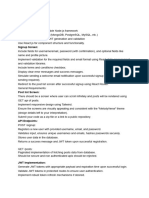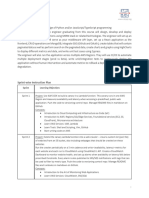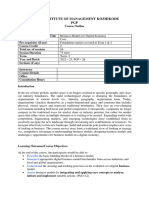0% found this document useful (0 votes)
7 views6 pagesCode Analysis Report
The 'Lecture Time Notifier' is a web application with a FastAPI backend and React frontend that manages lecture and exam schedules while providing notifications. Key recommendations for improvement include enhancing security measures, modularizing code structure for maintainability, optimizing performance, and improving user experience. Addressing these issues will make the application more secure, robust, and user-friendly.
Uploaded by
Shaba MohammedCopyright
© © All Rights Reserved
We take content rights seriously. If you suspect this is your content, claim it here.
Available Formats
Download as DOCX, PDF, TXT or read online on Scribd
0% found this document useful (0 votes)
7 views6 pagesCode Analysis Report
The 'Lecture Time Notifier' is a web application with a FastAPI backend and React frontend that manages lecture and exam schedules while providing notifications. Key recommendations for improvement include enhancing security measures, modularizing code structure for maintainability, optimizing performance, and improving user experience. Addressing these issues will make the application more secure, robust, and user-friendly.
Uploaded by
Shaba MohammedCopyright
© © All Rights Reserved
We take content rights seriously. If you suspect this is your content, claim it here.
Available Formats
Download as DOCX, PDF, TXT or read online on Scribd
/ 6


























































































